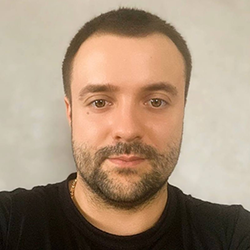Successful digital products don’t start with code — they start with the right people. Behind every scalable system or seamless user experience is a software development team with clearly defined roles, smart collaboration practices, and strategic alignment with business goals.
Choosing the right team structure isn’t just about efficiency — it’s about reducing risk, speeding up delivery, and ensuring long-term maintainability. As tech landscapes evolve, so do the demands on software teams: from product managers and solution architects to DevOps engineers and QA specialists.
This guide breaks down what an effective software development team looks like in 2025, what models businesses are choosing (and why), and how to structure a team that delivers consistent value — whether in-house, outsourced, or hybrid.
Let’s break down what that means in practice.
- Software teams in 2025 are cross-functional, agile, and product-oriented.
- The best structures balance autonomy with collaboration and accountability.
- Ficus Technologies helps organizations assemble and scale expert teams with the right mix of roles, tech expertise, and delivery strategy.
What Is a Software Development Team Structure?
Software development team structure refers to the way people, roles, and responsibilities are organized within a development project. A smart team setup ensures not only smooth communication and efficient delivery but also a better-quality product — especially in today’s fast-paced digital economy.
Key Roles in a Software Development Team
| Role | Responsibilities |
|---|---|
| Product Owner | Aligns team with business goals, defines features & priorities |
| Project Manager / Scrum Master | Manages timelines, tasks, blockers, and agile workflows |
| Frontend Developer | Builds the client-side interface (web/mobile apps) |
| Backend Developer | Handles APIs, databases, architecture, and integrations |
| Full-Stack Developer | Covers both frontend and backend development |
| UI/UX Designer | Designs user interfaces and optimizes user experience |
| QA Engineer | Tests functionality, security, performance |
| DevOps Engineer | Automates deployment, infrastructure, CI/CD pipelines |
| Business Analyst (BA) | Translates business needs into technical requirements |
| Tech Lead / Solution Architect | Sets technical direction, chooses tech stack, mentors devs |
Depending on the project’s complexity, some roles may be merged or extended — for example, a startup MVP might start with a full-stack developer and later expand to include specialized QA or DevOps engineers.
Common Team Structures in 2025
- Generalist Team
Best for: MVPs, startups, small teams
Developers wear multiple hats (e.g., full-stack + QA + DevOps).
Fast-moving but may lack depth in certain areas. - Specialist Team
Best for: Enterprise apps, regulated industries
Clear separation of roles: backend, frontend, QA, DevOps, etc.
More process-heavy but higher-quality output. - Hybrid Team
Best for: Scaling products with evolving needs
Mix of generalists and specialists.
Adaptable and scalable for product growth. - Feature Teams
Cross-functional teams built around features/modules.
Ideal for agile product organizations.
Encourages ownership and deep product understanding. - Component Teams
Built around specific parts of a system (e.g., database, API).
Best when dealing with large-scale platforms.
Requires strong inter-team coordination.
Agile-First Team Setup
Great things in business are never done by one person. They’re done by a team of people.
Steve Jobs
Extended Roles & Leadership
- Technical Lead vs Team Lead
Although these titles often overlap, their focus areas differ:
Tech Lead: Owns the architecture and technical direction. Offers mentorship, reviews code, and solves complex engineering challenges.
Team Lead: Focuses more on people management, communication, task prioritization, and delivery milestones. May or may not have deep technical knowledge.
Depending on team maturity, both roles can coexist or merge.
- Product Manager vs Product Owner
Product Manager: Defines the product vision and long-term strategy. Works closely with marketing, sales, and leadership.
Product Owner: More tactical, focused on sprint-to-sprint execution. Manages backlog and communicates daily with developers.
In Agile setups, these two roles often complement each other.
- Business Analyst vs Product Owner
Business Analyst: Acts as a bridge between stakeholders and the technical team. Documents business processes and supports the product team.
Product Owner: Owns the prioritization of features and ensures delivery aligns with user value.
Clear role definitions prevent duplication and improve delivery speed.
Ready to build a high-performing development team for 2025?
Contact UsConclusion
The right team structure is the foundation of a successful software product. By understanding the roles, formats, and strategic considerations behind building a dev team, businesses in 2025 can move faster, reduce risk, and stay competitive.
Whether you need a lean MVP team or a fully staffed agile pod — the structure you choose today shapes the results you’ll achieve tomorrow.
Why Ficus Technologies?
At Ficus Technologies, we help companies worldwide build flexible, high-performance software development teams that match their goals — whether launching an MVP or scaling an enterprise SaaS platform.
- 12+ years in full-cycle software development
- Agile-first delivery across FinTech, HealthTech, Retail, Logistics
- Pre-vetted senior developers, UI/UX experts, DevOps & QA teams
- Transparent collaboration & reporting
For agile teams, 5–9 members is a common size. For larger systems, multiple teams work in parallel.
Startups often benefit from full-stack developers early on. As the product grows, specialists add depth and scalability.
Yes — hybrid or cross-platform teams (e.g., React Native or Flutter) can deliver both, but this depends on tech stack and goals.
We use a modular staffing approach: start small, expand by adding roles (QA, DevOps, UX) as needed — always with senior-level talent.








